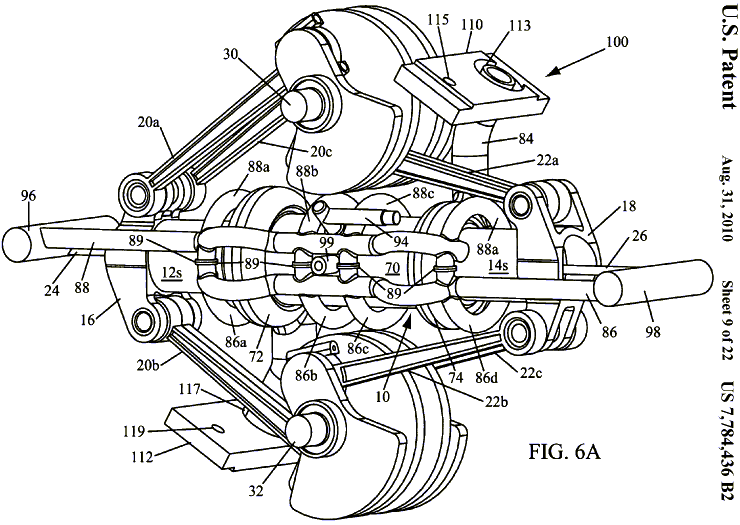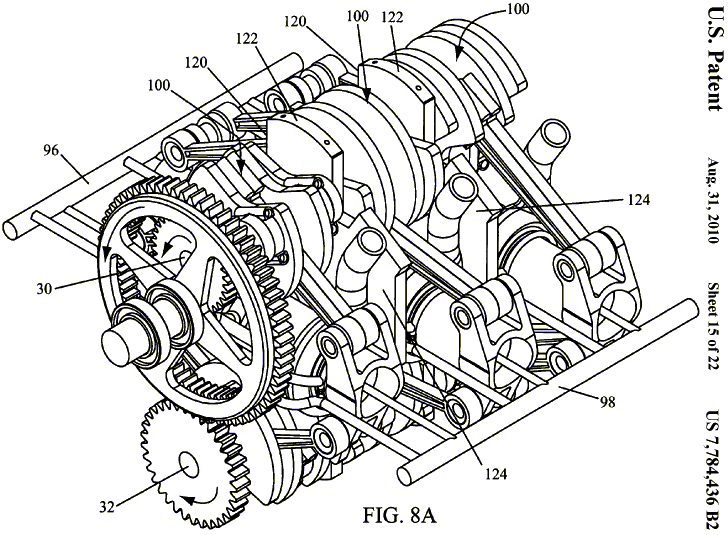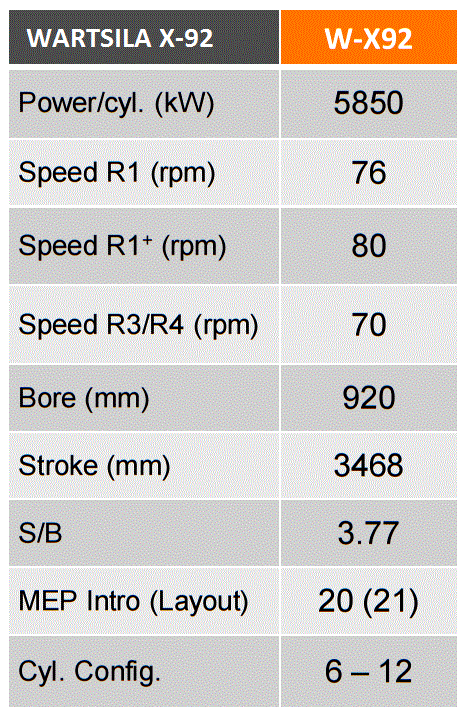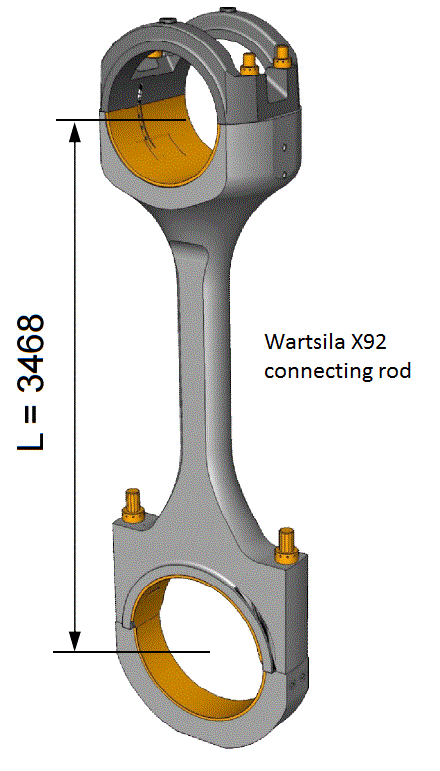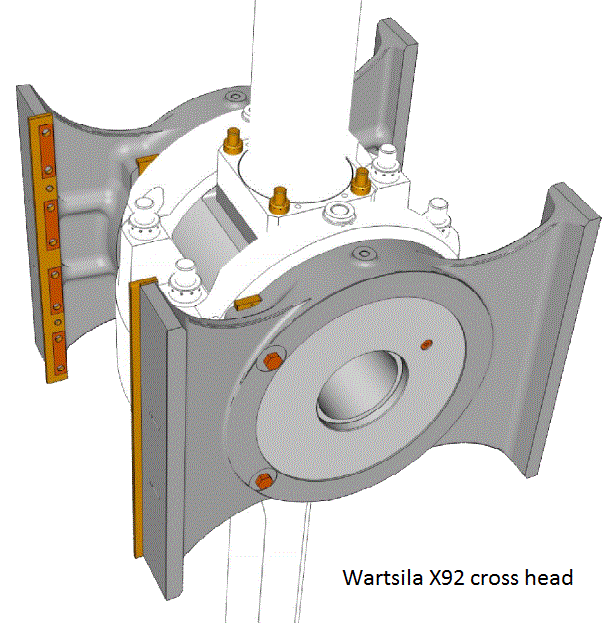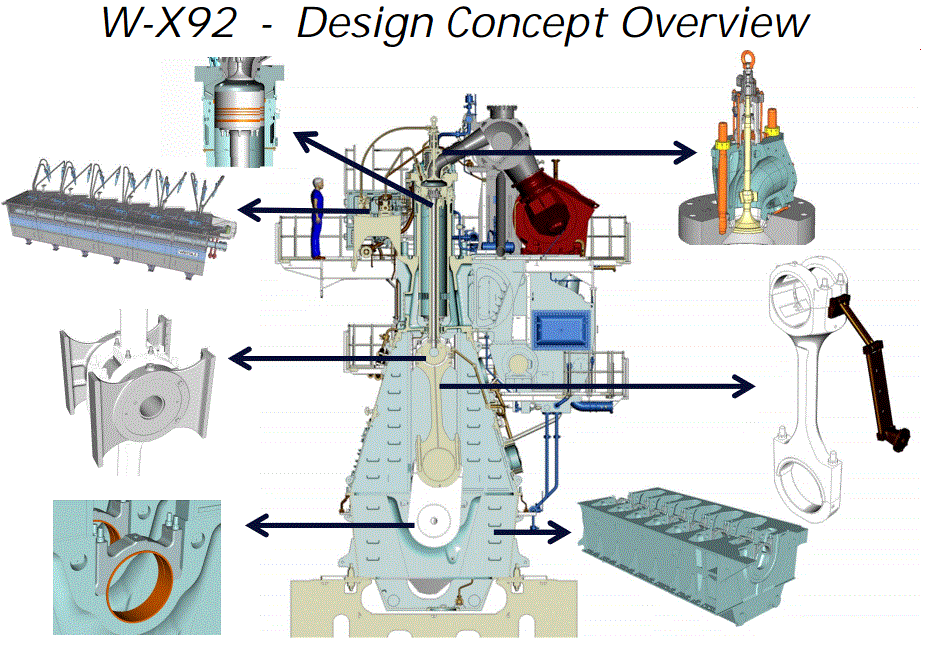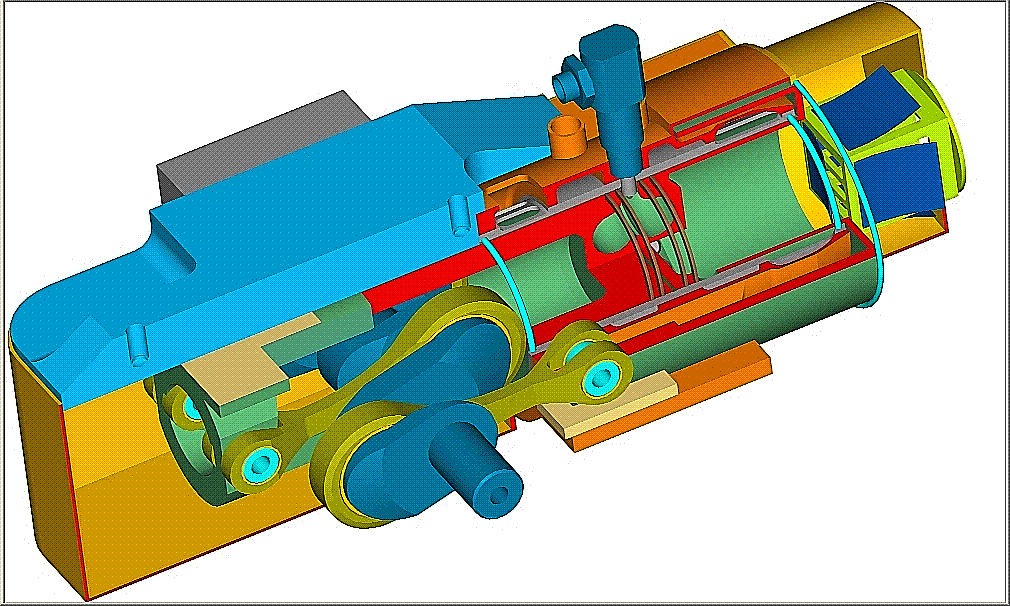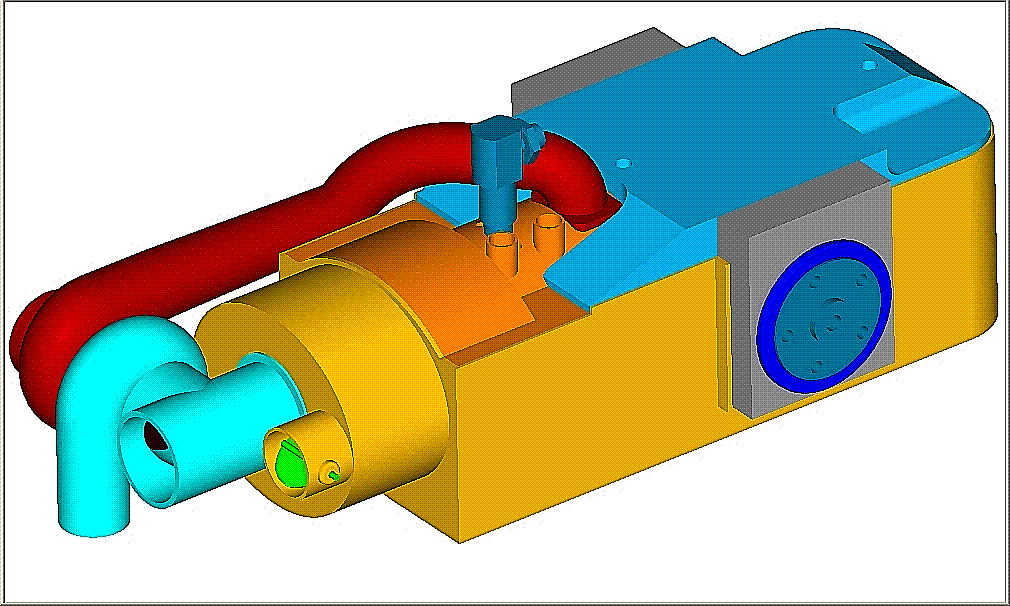Hello all.
Unless I am wrong, there are no patents granted by the US-PTO to
Mr. Marc Jackson (
munix@gmail.com).
Muniix (Marc Jackson) writes:
“
Clearly you do not understand the patent protection system, you patent all the implementations. To prevent someone releasing a inferior Implementation and damaging the reputation of your Innovation.
The patent you reference is prior art patents only. Protection from someone producing a bad valve.
I'm not telling anyone to do anything, especially to engage with someone who has no grasp of reality.
You think it's viable to spend millions to sell a few motorcycle heads for crf 450 owners, who can't use them on the road or competition. Hmm that will be $20k+ per head, minimum and still make a loss.”
Let me “apologize” (the following may be proved useful to someone interested in protecting his ideas by patents).
Patents granted to the “Bishop Innovation Limited” (assignee) by the US-PTO:
1 8,033,154 Steering rack manufacture
2 7,950,153 Method of manufacturing a steering rack
3 7,886,567 Steering rack manufacture
4 7,694,656 Cylinder head for rotary valve internal combustion engine
5 7,654,165 Composite steering rack
6 7,621,249 Port sealing in a rotary valve
7 7,584,741 Internal combustion engine with rotary valve
8 7,458,357 Gas sealing element for a rotary valve engine
9 7,401,587 Gas and oil sealing in a rotary valve
10 7,168,282 Method and apparatus for manufacture of a forged rack
11 7,000,444 Forging method and apparatus
12 6,994,067 Valve timing mechanism for a rotary valve internal combustion engine
13 6,789,042 Position encoder using statistically biased pseudorandom sequence
14 6,763,788 Variable timing mechanism for a rotary valve
15 6,759,648 Sensor for sensing absolute angular position of a rotatable body
16 6,624,900 Optical sensor
17 6,617,994 Capacitive flash analog to digital converter
18 6,528,783 Position sensor and circuit for optical encoder
19 6,501,068 Method for manufacture of optical torque transducers
20 6,450,044 Torque transducer
Seven of the above patents of the “Bishop Innovation Limited” relate directly with rotary valve engines; and only the two of them (7,584,741 and 7,401,587) are still “in force”( the rest five have lapsed due to not payment of the required maintenance fees).
Regarding the “strength” of the above two, still in force” US patents of Bishop:
The only independent claim of the
US7,584,741 is:
1. An axial flow rotary valve internal combustion engine comprising: at least one rotary valve rotatable about an axis within a bore of a cylinder head, said valve communicating with a respective cylinder in which a piston reciprocates, and an ignition means associated with said cylinder,
said rotary valve having an outside diameter less than 0.85 times a diameter of said cylinder, an inlet port extending from an inlet axial opening at one end of said valve and terminating as an inlet peripheral opening in a periphery of said valve, an exhaust port extending from an exhaust axial opening at the opposite end of said valve and terminating as an exhaust peripheral opening in the periphery of said valve, said peripheral openings periodically communicating with said cylinder through a window in said bore as said valve rotates, said window having a first window end proximate to said inlet axial opening and a second window end remote from said inlet axial opening, a combustion chamber formed in a space between a crown of said piston at top dead center and said cylinder head and said valve, said head having a combustion surface surrounding said window and extending to a wall of said cylinder, wherein said window and said valve are substantially centrally disposed about a first plane within which the axis of said cylinder lies,
said ignition means comprising first and second spark plugs, each of said spark plugs having a nose located at one end thereof exposed to said combustion chamber through said combustion surface, said noses being disposed on opposite sides of said window within axial extremities of said window, and an intersection point of an axis of each of said spark plugs with said combustion surface is radially inside said wall of said cylinder by a distance of at least 0.1 times the diameter of said cylinder, and said combustion chamber has first and second squish zones, at least a portion of each of said first and second squish zones being between the wall of said cylinder and the nose of each of said first and second spark plugs respectively.
The only independent claim of the
7,401,587:
1. A rotary valve assembly for an internal combustion engine comprising an axial flow rotary valve having a cylindrical portion, and an inlet port and an exhaust port terminating as openings in said cylindrical portion, a cylinder head having a bore in which said valve rotates about an axis with a predetermined small clearance between said cylindrical portion and said bore, a window in said bore communicating with a combustion chamber, said window being substantially rectangular in shape and said openings periodically communicating with said window as said valve rotates, bearing means journaling said valve in said bore, an array of floating seals surrounding said window, and a bias means preloading said array of floating seals against said cylindrical portion, said array of floating seals comprising at least two spaced apart elongate axial seals adjacent opposite sides of said window and at least two spaced apart arcuate circumferential seals adjacent opposite ends of said window, each said axial seal being housed in a respective axially extending axial slot formed in said bore, and each said circumferential seal being housed in a respective circumferentially extending circumferential slot formed in said bore,
characterised in that said circumferential seals are axially disposed between the ends of said axial seals.
Having just one independent claim, it means that every other claim of the patent “depends” on the independent claim, i.e. every dependent claim has all the limitations introduced by the independent claim plus its own limitations.
Question:
Are the above two “still in force” patents of Bishop Innovation Limited “strong” enough?
Suppose you want to “bypass” the US7,584,741 patent (i.e. to make, use or sell it in the territory of the USA without paying “royalties” to “Bishop Innovation Limited”).
The simplest way to “bypass” the patent is to select a “rotary valve having an outside diameter bigger than 0.85 times a diameter of said cylinder”.
Or, say, to use one only spark plug (or, better, a “laser spark plug” which ignites the mixture at the center of the rectangle window, wherein it is not possible to be disposed a conventional spark plug).
Suppose you want to “bypass” the other, “still in force”, US7,401,587 patent of Bishop (i.e. to make, use or sell it in the territory of the USA without paying “royalties” to “Bishop Innovation Limited”).
A simple way is to select a “slightly oblique” arrangement of the sealing means and grooves (the axial seals turn to slightly “helical” seals, which, by the way, can better fit with the oblique separator inside the Cross rotary valve).
Alternatively, you can have the circumpherential seals extending outside the ends of the axial seals, with the axial seals disposed between the ends of the circumpherential seals.
And so on.
Bishop Innovation Limited was a multi million dollar company.
The guys worked in the Bishop rotary valve project were smart guys.
Then why they wrote such “vulnerable” patents?
A reasonable answer is that they had to present “results” and “protection” to their investors.
I bet that if they were spending their own money for the patenting, they would never file such patent applications.
The rotary valve patents of the Bishop Innovation Limited are not “basic patens”, i.e. they are not patents presenting something fundamentally different than the prior art, but “patents dealing with the improvement of details of the prior art”.
Here is the first claim of the
PatRoVa rotary valve, for comparison (the GB2525704 patent has already be granted by the UK-IPO and is in force, the US patent is approved and is to be granted with the payment of the US480$ Issue Fee):
1. A disk rotary valve assembly for reciprocating piston positive displacement machines, the disk rotary valve assembly comprising at least: a cylinder (30); a cylinder head (5); a piston (40) reciprocally fitted in the cylinder (30); a chamber (50) defined inside the cylinder (30), the chamber (50) is sealed at one side by the piston (40), the chamber (50) is sealed at another side by the cylinder head (5); the cylinder head (5) comprising passageways (20, 17) for the introduction of gas in the chamber (50) and for the evacuation of the chamber (50) from the gas; the cylinder head (5) comprising a pair of oppositely arranged chamber ports (12), each chamber port comprising a lip (13) at its end; a disk rotary valve (1), the disk rotary valve (1) being rotatably mounted in the cylinder head (5), the disk rotary valve (1) rotating about a rotation axis (60) in synchronization to the piston reciprocation; the disk rotary valve (1) comprising a pair of oppositely arranged fronts (8), each lip (13) being in gas tight sealing cooperation with a respective front (8) of the disk rotary valve (1), the orthogonal projections of the oppositely arranged fronts (8) on the rotation axis (60) of the disk rotary valve (1) being at a substantial distance from each other; the disk rotary valve (1) comprising valve ports (10, 9), during a part of a rotation of the disk rotary valve (1) the chamber (50) communicates, through the valve port (10, 9) with passageways (20, 17), during another part of a rotation of the disk rotary valve (1) the fronts (8) seal the chamber ports (12), isolating the chamber (50) from the passageways (20, 17), the chamber ports (12) being arranged so that the total force applied on the disk rotary valve (1) due to a high pressure inside the chamber (50) to be several times smaller than the force applied separately on each front (8) due to the same high pressure inside the chamber (50).
And here is the 19th claim (which is also an independent claim) of the same patent for the PatRoVa, which may seem more simple / comprehensible to the forum member / reader:
“19. A disk rotary valve assembly for reciprocating piston positive displacement machines, comprising at least: a cylinder; a cylinder head; a piston reciprocally fitted in the cylinder; a chamber defined inside the cylinder, the chamber is sealed at one side by the piston, the chamber is sealed at another side by the cylinder head; the cylinder head comprising inlet passageways, exhaust passageways and a cavity, the cavity being a part of the chamber; the cylinder head comprising a pair of oppositely arranged chamber ports at two opposite sides of the cavity, each chamber port comprising a chamber port lip at its end; a disk rotary valve rotatably mounted in the cylinder head and rotating in synchronization with the piston reciprocation, the disk rotary valve comprising a pair of oppositely arranged fronts, the cavity being disposed between the pair of oppositely arranged fronts with each chamber port lip being in gas tight sealing cooperation with a respective front of the disk rotary valve, the disk rotary valve comprising valve ports, for a part of a rotation of the disk rotary valve the chamber communicates, through the valve ports, with some of the inlet and exhaust passageways of the cylinder head, for another part of a rotation of the disk rotary valve the chamber is sealed from the cylinder head passageways, the arrangement is such that the total force applied on the disk rotary valve due to a high pressure inside the chamber being many times smaller than the force applied separately on each front due to the same high pressure inside the chamber.”
Compare the above claims with the claims of the “still in force” two US patents of Bishop.
The PatRoVa patent is a “basic patent” because it introduces a completely different kind of rotary valves not existing before.
Just like most of the rest patents of pattakon.
Granted patents to pattakon by the US Patent and Trademark Office (US-PTO):
9,303,637 Connecting rod valve
9,273,605 Variable compression ratio engine
9,175,731 Constant velocity joint
9,022,005 Rotary engine
8,910,597 Reciprocating piston engine
8,776,749 Desmodromic hydraulic valve train
8,747,236 Constant velocity joint
8,662,031 Uniflow portless two-stroke engine
8,267,055 Variable compression ratio engine
8,220,422 Rack gear variable compression ratio engines
8,201,531 Desmodromic variable valve actuation
8,166,948 Throttle-less engine with improved variable valve system
8,166,929 Variable compression ratio engine
7,909,012 Pulling rod engine
7,765,965 Fully variable valve actuation
6,892,684 Variable valve gear
6,062,187 Pulling piston engine
Patent Applications of pattakon for which the granting of the patent has been already approved (Notice of Allowance):
20150345372 ASYMMETRIC TRANSFER AND INTAKE IN TWO-STROKES
20150233270 DISK ROTARY VALVE HAVING OPPOSED ACTING FRONTS
Thoughts?
Thanks
Manolis Pattakos
By the way, here is the reply e-mail (I think it is the 26th email received by Mr. Marc Jackson) of my “bet e-mail”:
-----Original Message-----
From: Marc Jackson [mailto:muniix@gmail.com]
Sent: Monday, January 16, 2017 7:50 AM
To:
man@pattakon.com
Subject: Re: Hi, thought this paper on variable inertia effects from University of WA be of interest
Hi Manolis,
What I did learn on the weekend was about another project, An engineering consultancy business here is doing work for an Indian company that manufactures transmissions and is expanding into supplying a full drive train for personal transport vehicles.. The company currently has no engine assembly line, they are starting with a clean sheet and so can implement any engine architecture without the usual considerations that limit innovation a existing production line has.
This makes them an ideal proposition to look at innovative low cost, efficient engine designs. I mentioned your site and inventions, they could well be interested in some form of licensing and collaboration if they find something that suits the purpose.
We could do the CFD work and I'll get a nice bonus for bringing in the work. Any of your engine designs with a a modern smart engine management system could well be suitable, would require significant engineering work to make them fit for purpose, with cooling, intake, exhaust, combustion optimisation and emissions taken into consideration. Imagine a very light power train, mid engined horizontally opposed two cylinder like a Porsche 911 using one of their existing automated manual transmissions all controlled by a simple smart power-train management system!
So I showed them some conversations, how relevant information was ignored, dismissal of technical arguments that didn't fit opinions, the dual spark plug really had them worried, after the details of how dual plugs improved the Ducati Testastretta DS 11 degree engines from 150-160hp, and the 11% fuel saving, the following statement that all dual plug systems have been failures and abandoned. Had them really concerned it was irrational, and after it was explained how squish was used to provide a superior flame kernel in dual offset spark plugs, several times etc and how this was a repeated theme over and over about all sorts of issues, flow coefficients, intake pressure waves and gradients, understanding of cooling considerations and combustion, chemical species produced, fluid flow arguments, they then considered they could not work with such a person. These issues destroy projects, there would have to be something really impressive to persuade them otherwise.
On 13 January 2017 at 17:18, <man@pattakon.com> wrote:
Hello Marc.
Automakers do their best to maximize their profits.
They should not be accused for this.
Maybe they should look more at the long term profit, however it is their own decision.
Fortunately, there are other ways for something good to get in the market.
Thanks for your time to think about the PatRoVa, as well as for your estimation / calculations about the "PatRoVa vs Bishop" flow, no matter how much I disagree.
Are you confident about your calculations?
A bet, starting with US1,000$ that increase geometrically depending on the mistake / error of your calculations (I explain in the following how) can make things interesting.
According your e-mails, there is a running (and in perfect condition) Honda CRF450 with the Bishop rotary valve on it.
I suppose there is a dyno test which can be reconfirmed any time it will be asked by me (we can arrange how).
I suppose, also, the dyno test is not confidential.
So, here is how the "bet" will "work":
You will start with the dyno test of the specific Bishop CRF450, you will calculate (it will be easy based on the 200% better flow of the Bishop) the fall of the peak power in case the cylinder head is replaced by a PatRoVa, and you will provide me the data.
Then I will modify a Honda CRF450 to PatRoVa (the form of the window(s) / ports, the diameter of the valve and every other detail of the design is my own business).
And I will dyno test it (with the dyno test being reconfirmable if you ask so (we can arrange the details)).
If you are correct, you will take my US1,000$ and the satisfaction you know what you say.
If not, for every +10% difference in peak power (the 10% refers to the peak power of "your" Bishop CRF450) from your calculations, the amount to be paid by you doubles.
For instance, if the Bishop CRF450 makes on the dyno 100PS, and according your calculations no more than 60PS peak power can be made by the PatRoVa CRF450, then, if the dyno writes 110PS for the PatRoVa CRF450 (i.e. 5*10% above your calculation), you will pay to the UNICEF (not to me) 2^5=32 times the initial amount of the bet (i.e. US32,000$) and you will sent me the receipt to publish it in the PatRoVa web page.
The US1,000$ I will pay in case you prove correct, may seem not much, however don't forget the cost to make a decent quality PatRoVa prototype,
If your friends at Bishop like so, they can bet, too.
Have a nice day.
Manolis Pattakos


